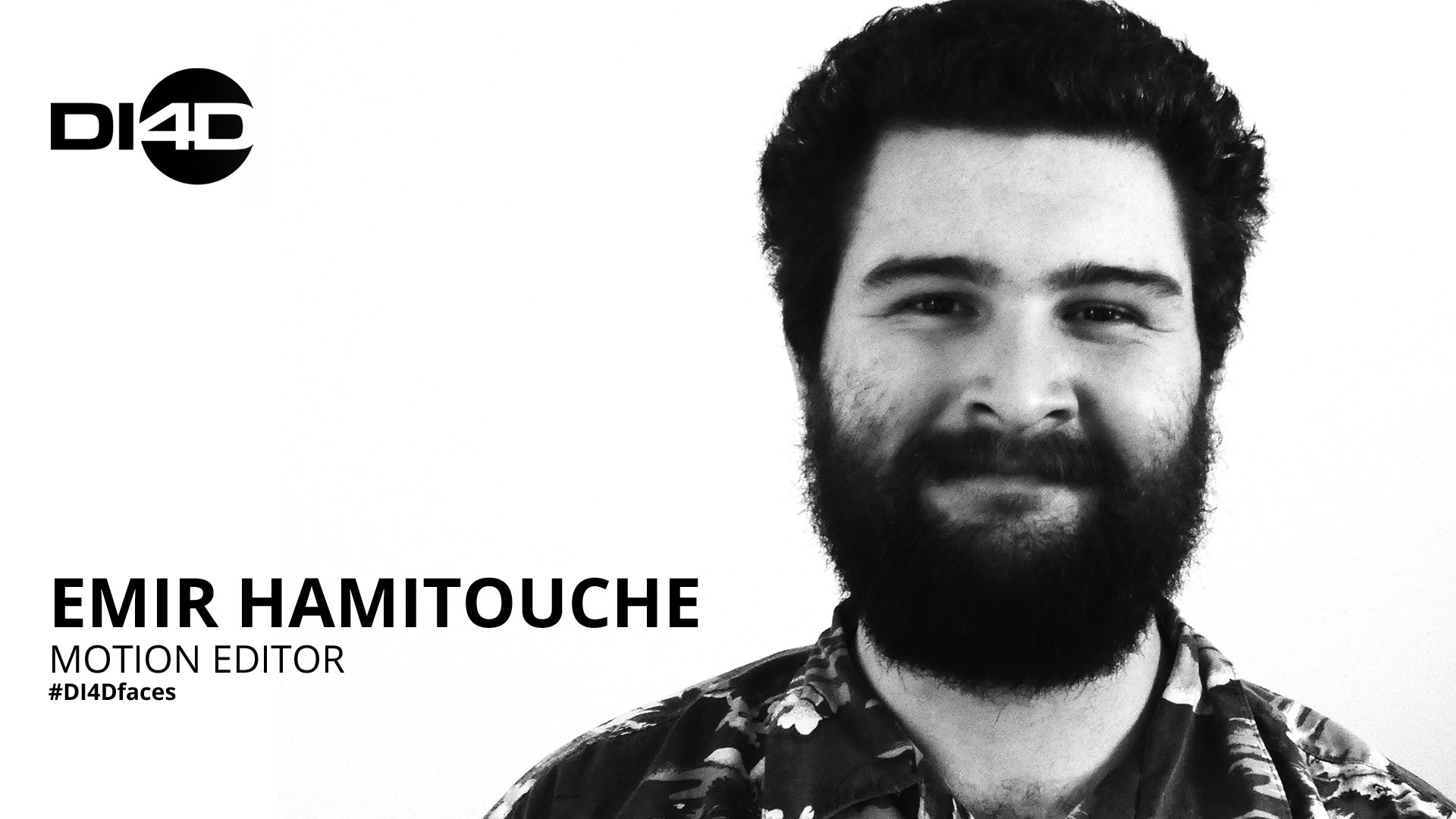
Emir Hamitouche – Motion Editor
Three months into his first professional role, Motion Editor Emir Hamitouche talked to us about his route into the industry, the transition from education to professional work and his advice for others considering a career in motion capture.
Hello Emir. You’re three months into your first professional role, as a Motion Editor. How did your studies and personal endeavours lead you to this point?
I’ve always loved animation, and have been drawing and animating since high school. This led me to study animation for games at Glasgow Caledonian University (GCU). Towards the end of my course I moved away from animation as an exclusive focus and started to get more into visual effects – specialising in digital compositing and post production. After university, I worked in some freelance roles and continued to practice my 3D modelling and animation skills with my own personal animation projects. A friend who works for DI4D told me they were looking for Motion Editors. After finding out what the job would entail it seemed like my skills would be a good fit. So I did some research into DI4D and was really excited by the technology and the previous work they’ve done – so I applied and got the job!
Can you talk in a little more detail about your university course and the most relevant part of that to your role as Motion Editor at DI4D?
I studied Computer Games (art and animation) at GCU. The broad nature of my course meant that I was able to learn about all aspects of 3D animation, visual effects and games; from storyboarding, concept art, modelling, rigging and animation to compositing, programming and game engines.
My main interests were animation and compositing, I really enjoyed bringing animated characters to life and CGI into live action shots. My honours project focused on how computer generated animated characters interact with an actor, and the differences between 2D and 3D animation in live action films.
While many of these skills are useful for this role I think an understanding of 3D modelling and animation on a technical level, particularly facial topology, have helped the most. Plus a keen eye for detail for tracking the motion of the performer, for it to correspond with the digital model as perfectly as possible.
What was it that excited you about the role of Motion Editor at DI4D?
I was excited by the clients, and the work that DI4D had done previously. To be honest, I hadn’t really considered working in motion capture much during university, but, after some research and seeing past work that included Blade Runner 2049, Love Death and Robots, Call of Duty and others, I was very keen to take the next step. This is my first industry job and if you’d told me a year ago what I’d be working on in my first job I wouldn’t have believed it! Once I had seen the kind of technology used and what kind of work I would be doing, I applied immediately.
Did you find the transition from education to the professional industry a challenge? How was the onboarding process for you?
As this is my first industry job, I wasn’t sure what was expected of me but I was surprised by how smooth the transition was. The training process was gradual, starting with some simpler performances and meshes captured with the PRO system then moving on to some of the trickier HMC data. It didn’t take long before I was working on live projects.
Can you talk about the specialist training you’ve received at DI4D and what that’s helping you achieve for clients?
Primarily my training has been in DI4D’s specialist software and techniques for tracking the motion capture data to the meshes, and learning some of the pre and post tracking processes. I’m continuing to improve my skills with tracking, aiming to achieve 1 to 1 accuracy with the actors’ performances to the animation data. It’s also been extremely useful learning how all the data is organised and managed and seeing how the company functions on a day to day basis. I still have a lot to learn and I’m excited about the future.
What have you most enjoyed about the role itself in your first 3 months?
I enjoy the process of tracking the performance to the mesh. I’m honing those skills every day and learning new techniques for achieving the most accurate results. I work on a variety of different actors and performances and a mix of PRO and HMC data.
Based on your own experience, what piece of advice would you give to those aspiring to work in this field?
Motion capture is a continually growing medium for animation and it’s an exciting time to get into the industry. If you are looking to get into this kind of work, as long as you understand the fundamentals of 3D animation production, have a good work ethic and are enthusiastic and excited to learn, you don’t need to have a perfect portfolio. And of course, research the company. I feel very lucky to have found what feels like a centre of excellence here in Scotland, and to be learning alongside some of the most experienced software engineers and motion editors in the country.
Get in touch with Emir via LinkedIn. If you have any questions for the team, drop us a message here.
